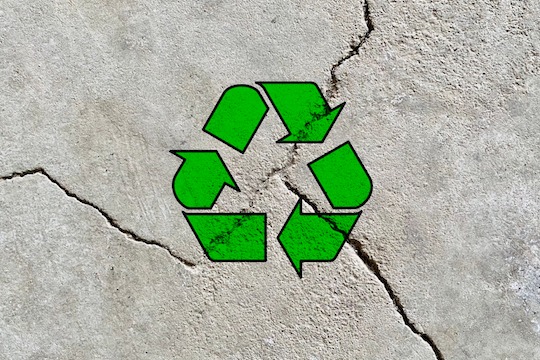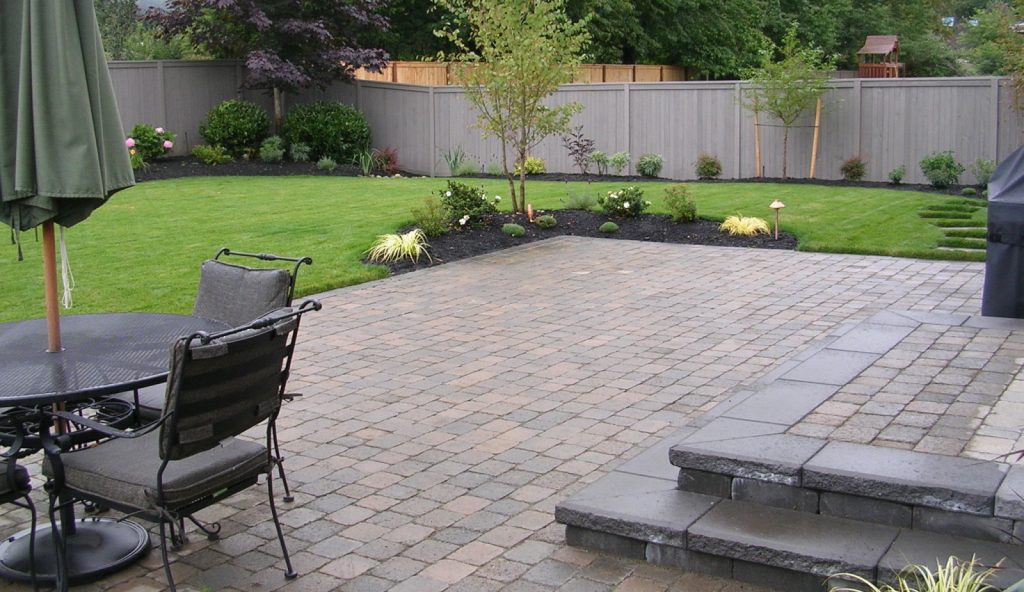It’s not possible to say one type of pavement (or pavers) is better for the environment than others. The pros and cons of the choices have to be considered.
When one takes a bird’s eye view of a residential property – as drones are doing for real estate listings these days – it’s remarkable how much of the land is taken up by hardscapes. Driveways, sidewalks, patios, and pool surrounds might occupy 20, 30, 40 percent or more of the exterior surrounding the home and garage. The asphalt, paving, concrete and driveway construction industry is booming.
So it makes sense, and is the responsible and pragmatic thing to do, to consider the sustainability factors of those hardscapes when it comes time to design and install them. That said, there are many variables and, often, difficult choices to be made in the full life cycle assessment of those driveways and sidewalks. And what might work for one home will be less desirable in the one next door.
A landscape architect or landscape designer, or perhaps an environmental engineer, will be able to advise you on this. Even the occasional high-end asphalt contractor will possess knowledge and expertise about sustainability factors. But even before you have that conversation, here are a few things to know about the pros and cons of the most common pavement options:
Does your property, or your neighborhood or the whole city, have water drainage issues?
It might seem like accumulated rainwater is just an aesthetic or possibly structural problem (if standing water gets into a basement, for example). But storm water runoff can be an environmental problem also if it is dirty from motor oils or warmed by the pavement and then runs into a natural river or stream where it can harm wildlife. In many cities, excessive paving has led to flooding and sewer outflows because rainwater is not naturally absorbed into the ground.
If any of these situations are the case, the responsible pavement would allow absorption of rainwater where it falls – through either permeable bricks or asphalt or even concrete open grids with spacing that allows grass to grow.
Which is worse for your home: keeping things cool in summer or warm in winter?
The color of your pavement affects the heat absorbed from the sun. Because pavement is dense, that heat will remain into the night, after sunset. Dark pavements, such as with asphalt, absorb more solar heat than lighter colored concrete.
The question is, which does the homeowner want: darker asphalt that will naturally melt ice and snow, or lighter pavement that won’t retain heat and force more use of an air conditioning system? The local climate helps answer that question.
Something else to consider is how fresher, recently laid asphalt also off-gasses some of the components in the material, which include secondary organic aerosols. This happens to the greatest extent in hot, sunny weather. In high concentrations these can be deleterious to human health, although no one is saying there is an immediate effect of all the asphalt we encounter in our daily lives.
Do you need something new, or might a repair be sufficient?
Repairs and maintenance to an existing driveway or sidewalk will always have a lower carbon footprint than something new. The best way to keep existing pavement in good shape is semi-annual sealant applications. In places where cracks have formed, chip seal will help keep out moisture that could lead to additional deterioration and, eventually, the dreaded potholes.
That bird’s eye view offers essentially a two-dimensional image. The other dimensions show how picking out the right materials for driveways, sidewalks, patios and pool decking is not so simple, but worthy of thoughtful consideration.


